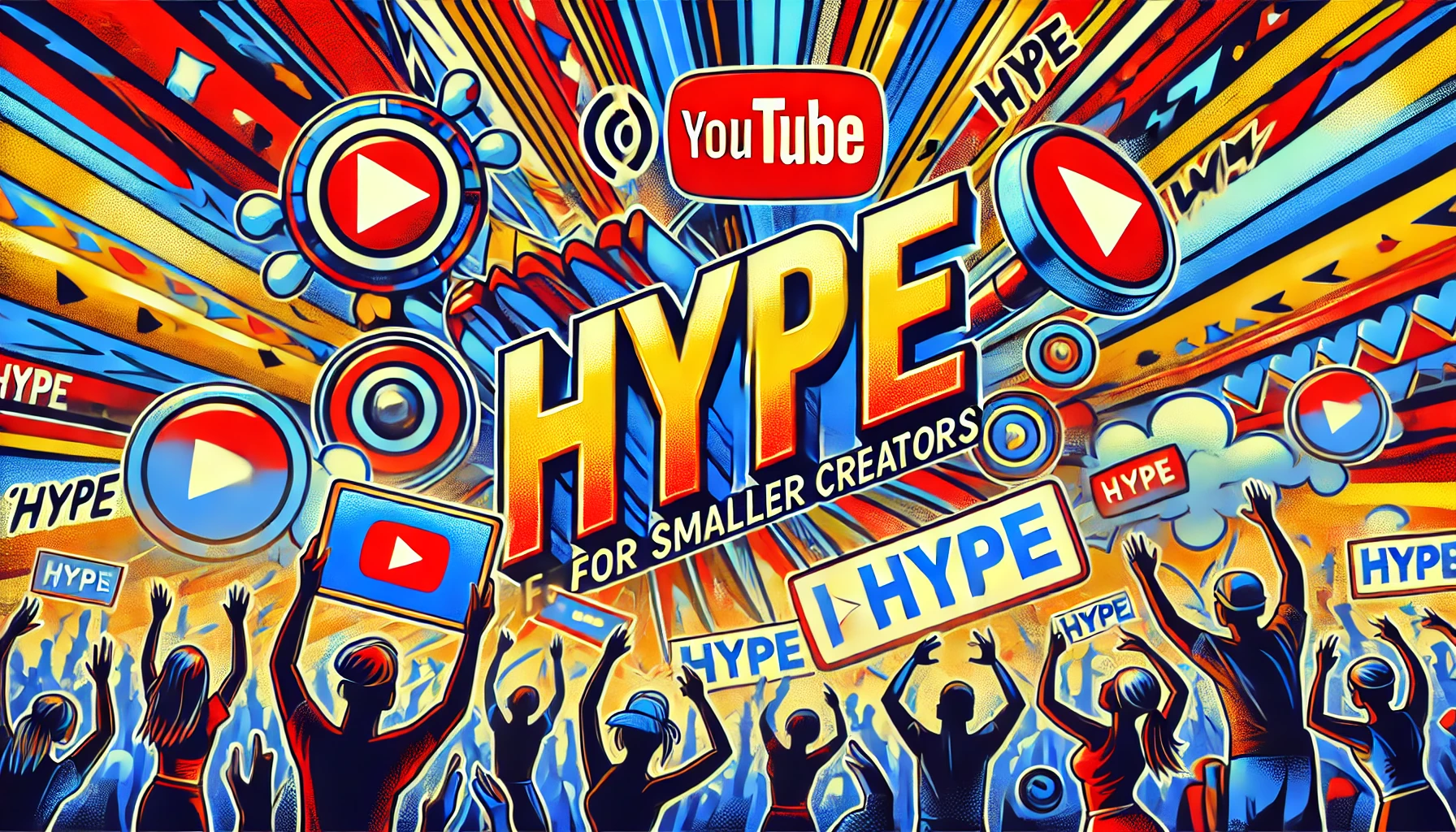Getting the Hang of Deep Learning
Deep learning, a cool branch of machine learning, uses neural networks to mimic how our brains learn. It's changed the game in many fields, letting machines do stuff that usually needs human smarts.
The Rise of Neural Networks
Neural networks are the heart of deep learning, designed to work like our brains. At first, they were used for simple tasks like sorting spam from real emails. But now, they're tackling big challenges in areas like visual search engines, recommendation systems, chatbots, and even medicine.
| Era | Big Breakthrough | Use Case |
|---|---|---|
| 1950s-1980s | Perceptrons and Early Neural Networks | Basic pattern recognition |
| 1990s | Multilayer Perceptrons (MLPs) | Better at sorting stuff |
| 2000s | Convolutional Neural Networks (CNNs) | Recognizing images and videos |
| 2010s-Present | Recurrent Neural Networks (RNNs), Generative Adversarial Networks (GANs) | Understanding language, creating images |
Neural networks have come a long way from simple perceptrons to fancy ones like CNNs and RNNs. These advanced networks can handle tons of data, making them perfect for tasks like recognizing images, transcribing speech, and translating languages (Coursera).
Where Deep Learning Shines
Deep learning is super versatile, showing up in all sorts of industries. Each use case involves neural networks learning and doing specific tasks, often beating traditional machine learning methods.
Healthcare
In healthcare, deep learning is shaking things up in diagnostics and treatment. These algorithms can analyze medical images to spot diseases, predict patient outcomes, and even help discover new drugs. Check out our article on ai in healthcare for more.
Robotics
Deep learning is key to making autonomous robots. These robots use neural networks to move around, recognize objects, and do tasks with precision that was impossible before.
Computer Vision
Computer vision gets a huge boost from deep learning. Neural networks help with facial recognition, object detection, and image classification. This tech is vital for security systems, self-driving cars, and augmented reality.
Natural Language Processing (NLP)
NLP uses deep learning to understand and generate human language. This includes translating languages, analyzing sentiment, and recognizing speech. For more, check out our articles on artificial intelligence technology and ai in education.
Deep learning's impact across different sectors shows its huge potential. As neural networks keep getting better, their uses will keep growing and changing the game even more.

Neural Networks in Deep Learning
Neural networks are the heart and soul of deep learning, designed to mimic how our brains work to tackle tough, data-heavy problems (V7 Labs). Let's break down how they work and the different types you might come across.
How Neural Networks Work
Neural networks in deep learning are made up of layers: input, hidden, and output. Each layer has nodes (neurons) that handle data and pass it along. The more hidden layers, the smarter the network gets at spotting patterns. Here's the lowdown:
- Input Layer: Takes in raw data.
- Hidden Layers: Crunches the data through multiple layers, each doing its own calculations and tweaks.
- Output Layer: Spits out the final result or prediction.
Each node in these layers tweaks the data with weights and runs it through an activation function to add some non-linearity, helping the network learn complex stuff. During training, the network fine-tunes these weights to cut down errors and boost accuracy (Coursera).
Types of Neural Networks
Different neural networks are good for different jobs. Here are some of the usual suspects:
-
Convolutional Neural Networks (CNNs): These are your go-to for image and video recognition. CNNs handle data that looks like a grid, like pictures. They use convolutional layers with filters to spot things like edges, textures, and shapes.
-
Recurrent Neural Networks (RNNs): Perfect for sequence data, RNNs shine in tasks like language modeling and time-series prediction. They have loops that let them remember past inputs, making them great for stuff that needs context and timing.
-
Feedforward Neural Networks (FNNs): The simplest kind, FNNs move data in one direction—from input to output—without any loops. They're used for straightforward classification tasks.
| Type of Neural Network | Main Use | Key Features |
|---|---|---|
| Convolutional Neural Networks (CNNs) | Image and Video Recognition | Convolutional layers, filters, pooling layers |
| Recurrent Neural Networks (RNNs) | Sequence Prediction, Language Modeling | Loops, remembers past inputs |
| Feedforward Neural Networks (FNNs) | Classification | Data flows one way, no loops |
Knowing these types helps you pick the right tool for the job, whether you're processing images with CNNs, handling sequences with RNNs, or doing simple classification with FNNs.
Want to see how deep learning stacks up against other AI tech? Check out our article on machine learning. Curious about AI in different fields? Dive into our pieces on healthcare and education.
Training Deep Learning Algorithms
Training deep learning algorithms boils down to three main methods: supervised learning, unsupervised learning, and reinforcement learning. Each has its own quirks and uses.
Supervised, Unsupervised, Reinforcement Learning
Supervised Learning
In supervised learning, algorithms get their smarts from labeled data. Think of it like a teacher grading homework. Each piece of data comes with the right answer, and the algorithm learns by comparing its guesses to these answers, tweaking itself to get better over time.
| Supervised Learning | Description |
|---|---|
| Data Type | Labeled |
| Example | Image classification |
| Goal | Minimize prediction error |
Unsupervised Learning
Unsupervised learning is like exploring a new city without a map. The data has no labels, and the algorithm's job is to find patterns and groupings on its own. It's great for things like clustering similar items together or finding associations.
| Unsupervised Learning | Description |
|---|---|
| Data Type | Unlabeled |
| Example | Customer segmentation |
| Goal | Discover hidden patterns |
Reinforcement Learning
Reinforcement learning is the thrill-seeker of the bunch. Here, an agent learns by doing, getting rewards or penalties based on its actions. It's like training a dog with treats and time-outs. The goal is to maximize the total reward over time.
| Reinforcement Learning | Description |
|---|---|
| Data Type | Feedback from environment |
| Example | Game playing |
| Goal | Maximize cumulative reward |
Deep learning often taps into these methods to train neural networks (Coursera). For a deeper dive into these learning methods, check out our article on machine learning.
Human Assistance vs. Automation
Deep learning algorithms are like self-sufficient teenagers—they need less hand-holding compared to traditional machine learning. They shine with unstructured data and can handle massive datasets, which is a big win for unsupervised learning. The training process involves lots of repetitive learning cycles, getting better without needing a human to step in.
| Aspect | Machine Learning | Deep Learning |
|---|---|---|
| Human Assistance | High | Low |
| Data Type | Structured | Unstructured |
| Dataset Size | Small to Medium | Large |
Deep learning algorithms get smarter through repetition, unlike machine learning algorithms that often need a human to correct their mistakes (Coursera).
For more info, check out our article on artificial intelligence technology and its impact on sectors like healthcare and education.
By getting a handle on these training methods and the balance between human help and automation, you can better appreciate the complexities and potential of deep learning in AI.
Deep Learning in Various Industries
Deep learning is shaking things up across many sectors, bringing in cool solutions that were once just sci-fi dreams. From healthcare to gaming, its uses are as diverse as they are impressive.
Industry Applications
Deep learning is making waves in many fields, offering smart solutions and boosting efficiency (Coursera). Here are some standout examples:
-
Healthcare: Imagine a world where doctors can analyze tons of patient data instantly. Deep learning makes this possible, helping with personalized treatments, cutting down on errors, and giving real-time updates on things like blood sugar levels and heartbeats. Want more? Check out our article on AI in healthcare.
-
Financial Services: In finance, deep learning is the watchdog against fraud, managing risks, and predicting trends. By crunching big data, these algorithms spot patterns and oddities that might signal fraud, making your money safer.
-
Customer Service: Ever chatted with a bot that actually understood you? Deep learning powers those chatbots and virtual assistants, making customer service faster and more personalized.
-
Computer Vision: Deep learning has taken computer vision to new heights, allowing systems to recognize and categorize objects, people, and activities in real-time. Think facial recognition, self-driving cars, and beefed-up security systems.
-
Gaming: The gaming world is getting a major upgrade thanks to deep learning. It creates more lifelike and immersive experiences. Models trained with reinforcement learning learn from their mistakes, making game environments and characters more realistic.
-
Natural Language Processing (NLP): Deep learning is a game-changer for speech recognition, language processing, and translation services. It's behind virtual assistants, automated transcription, and real-time language translation.
Coursera Courses on Deep Learning
If you're itching to dive into deep learning, Coursera has some killer courses. They cover everything from the basics to advanced techniques and real-world applications:
- Deep Learning Specialization: Created by Andrew Ng, this series gives you a solid intro to deep learning, covering neural networks, convolutional networks, and sequence models.
- AI for Everyone: Perfect for non-techies, this course offers a broad overview of AI and its applications, including deep learning.
- Machine Learning: While it covers a wide range of AI techniques, this course dives deep into deep learning algorithms and their uses.
- Advanced Deep Learning Specialization: For those who already know the basics, this series tackles more complex topics and techniques.
| Course Name | Duration | Level |
|---|---|---|
| Deep Learning Specialization | 4 months | Intermediate |
| AI for Everyone | 4 weeks | Beginner |
| Machine Learning | 11 weeks | Intermediate |
| Advanced Deep Learning Specialization | 5 months | Advanced |
For more on this topic, check out our articles on machine learning and artificial intelligence technology.
Deep learning is not just a buzzword; it's changing the game across various industries, opening up endless possibilities and transforming how we interact with tech.
Deep Learning vs. Machine Learning
Alright, let's break down the differences between deep learning and machine learning. Both are part of the AI family, but they play different roles and have their own quirks.
Key Differences
Deep learning and machine learning often get mixed up, but they’re not the same thing. Think of deep learning as a special kind of machine learning, which itself is a part of AI (Coursera). Here’s how they stack up:
| Aspect | Machine Learning | Deep Learning |
|---|---|---|
| What It Is | Systems that learn and adapt from experience without being explicitly programmed | Uses neural networks to mimic how our brains learn |
| Data Needs | Needs structured data | Handles huge datasets, even messy ones |
| Human Help | Needs human tweaks when it messes up | Gets better on its own through repetition |
| Complexity | Simpler, good for straightforward tasks | Super complex, great for tough problems |
| Example | IBM Watson answering questions | AlphaGo learning to play Go by itself |
Machine learning models get better by munching on lots of data. Take IBM Watson, for example. It was fed tons of Q&A pairs to beat Jeopardy champs in 2011 (Coursera). On the flip side, deep learning algorithms like AlphaGo learn by playing against themselves, mastering the game of Go (Coursera).
Want more on AI tech? Check out our artificial intelligence technology section.
Advancements in Deep Learning
Deep learning is making waves, pushing AI to new heights. Take AlphaGo, which evolved into MuZero. MuZero can master games like Go, chess, and even Atari without knowing the rules upfront, showing off the power of deep learning (Coursera).
| Advancement | What It Did |
|---|---|
| AlphaGo | First to beat a human Go player and a world champ by learning through self-play |
| MuZero | Latest version; masters games without knowing the rules first |
These breakthroughs show deep learning's potential to solve complex problems in various fields. From healthcare to education, deep learning is set to shake things up. Curious about AI in healthcare? Visit our ai in healthcare section.
Deep learning stands out because it can handle massive, messy data. As AI keeps growing, knowing the difference between deep learning and machine learning will help us understand what AI can do next. Want to know more about AI in education? Check out our ai in education article.
Common Problems in Training
Training deep learning models can be a real headache. Two big issues are overfitting and underfitting, plus gradient problems and long training times.
Overfitting and Underfitting
Overfitting is when your model aces the training data but flunks on new data. It's like memorizing answers for a test but not understanding the material. This happens if your model has too many parameters, trains too long, or doesn't have enough data to learn from.
Underfitting is the opposite. Your model can't even get the training data right, let alone new data. This usually means your model is too simple or hasn't trained enough.
| Problem | Cause | Result |
|---|---|---|
| Overfitting | Too many parameters, long training | Poor performance on new data |
| Underfitting | Simple model, not enough training | Poor performance on all data |
Gradient Issues and Training Time
Gradient problems are another biggie. Vanishing gradients mean your model's learning grinds to a halt because the gradients get too small. Exploding gradients are the opposite; they make training unstable because the gradients get too big.
Training time can also be a drag, especially with big models and datasets. It can take forever, slowing down your progress. Efficient use of computational resources and optimizing your model can help speed things up.
| Issue | Description |
|---|---|
| Vanishing Gradients | Gradients get too small, slowing learning |
| Exploding Gradients | Gradients get too big, causing instability |
| Training Time | Long process due to big models/datasets |
Tackling these problems can make a huge difference in how well your deep learning models perform. For more tips and tricks, check out our articles on machine learning and artificial intelligence technology.
Real-World Applications
Deep learning isn't just a buzzword; it's changing the game in many industries. Let's dive into how it's making waves in healthcare, robotics, computer vision, and natural language processing (NLP).
Healthcare and Robotics
In healthcare, deep learning algorithms can sift through mountains of patient data in real-time. Imagine your doctor getting instant updates on your health metrics like blood sugar, blood pressure, and heart rate. This tech helps doctors tailor treatments to you and cuts down on medical mistakes, making healthcare safer and more effective (Augmented Startups). Curious about more AI magic in healthcare? Check out our article on AI in healthcare.
| Application | Benefits |
|---|---|
| Patient Monitoring | Real-time vital sign analysis |
| Personalized Treatment | Custom healthcare plans |
| Error Reduction | Fewer medical mistakes |
When it comes to robotics, deep learning has turned robots into quick learners. They can now handle complicated tasks and adapt to new situations, making them smarter and more useful.
Computer Vision and NLP
Deep learning has taken computer vision to new heights. Models can now recognize and categorize objects, people, and activities in real-time. This tech is behind facial recognition systems, self-driving cars, and security cameras.
| Application | Benefits |
|---|---|
| Facial Recognition | Better security and ID checks |
| Self-Driving Cars | Safer and smarter navigation |
| Surveillance | Real-time monitoring and threat detection |
NLP, powered by deep learning, lets machines understand the subtleties of human language, including sarcasm and context. This has led to the rise of chatbots, voice assistants, and automated customer service, making interactions smoother and more satisfying. Want to know more about AI's role in tech? Visit our article on artificial intelligence technology.
| Application | Benefits |
|---|---|
| Chatbots | Better customer service |
| Voice Assistants | Smoother user interactions |
| Automated Systems | Quick and accurate responses |
Deep learning is pushing the envelope in various fields, making things work better and smarter. For more cool stuff, check out our sections on machine learning and AI in education.
Deep Learning in Big Data Analytics
Data Representation
Deep learning is like a supercharged brain for your data. It digs deep to find hidden patterns and connections, even when your data looks like a jumbled mess. This is a game-changer for Big Data Analytics, where data often comes in raw and unorganized (Journal of Big Data). Think of it as a digital Sherlock Holmes, breaking down complex information into understandable chunks. Here’s what it can do:
- Spotting intricate patterns
- Making data easier to search
- Automatically labeling data
- Speeding up data retrieval
- Simplifying decision-making tasks
| Task | Benefit |
|---|---|
| Spotting Intricate Patterns | Finds hidden relationships in data |
| Making Data Easier to Search | Improves organization and searchability |
| Automatically Labeling Data | Saves time on manual tagging |
| Speeding Up Data Retrieval | Quick access to important info |
| Simplifying Decision-Making Tasks | Better classification and decisions |
Challenges and Benefits
Challenges:
Deep learning isn't all sunshine and rainbows. It comes with its own set of headaches:
- Learning from Streaming Data: Keeping models updated with new data.
- High-Dimensional Data: Handling data with tons of features.
- Scalability of Models: Making sure models can grow with the data.
- Distributed and Parallel Computing: Spreading out computations efficiently.
| Challenge | Description |
|---|---|
| Learning from Streaming Data | Keeping models updated with new data |
| High-Dimensional Data | Handling data with tons of features |
| Scalability of Models | Making sure models can grow with the data |
| Distributed and Parallel Computing | Spreading out computations efficiently |
Benefits:
Despite the challenges, deep learning has shown impressive results in areas like speech recognition, computer vision, and natural language processing (Journal of Big Data). Here’s why it’s worth the hassle:
- Better performance in machine learning tasks
- More accurate classification models
- Higher quality outputs from generative models
- Consistent performance across different conditions
| Benefit | Description |
|---|---|
| Better Performance in Machine Learning Tasks | Enhanced results across various tasks |
| More Accurate Classification Models | Improved categorization |
| Higher Quality Outputs from Generative Models | Better samples from generative models |
| Consistent Performance Across Different Conditions | Reliable results no matter the situation |
Deep learning can pull out complex features from raw data, making it possible to use simpler models for tasks like image recognition, object detection, and semantic tagging (Journal of Big Data). This makes it a powerful tool in Big Data Analytics and a key player in artificial intelligence technology.
To wrap up this deep dive into deep learning, let's summarize the key points and look towards the future of this transformative technology.
Conclusion
Deep learning has emerged as a powerhouse in the field of artificial intelligence, revolutionizing various industries and pushing the boundaries of what machines can accomplish. From healthcare diagnostics to autonomous vehicles, deep learning algorithms are tackling complex problems with unprecedented accuracy and efficiency.
Key Takeaways:
- Neural networks, the backbone of deep learning, have evolved from simple perceptrons to sophisticated architectures like CNNs and RNNs.
- Deep learning excels in areas such as computer vision, natural language processing, and robotics.
- Training methods include supervised, unsupervised, and reinforcement learning, each with its own strengths and applications.
- Deep learning differs from traditional machine learning in its ability to handle unstructured data and improve without constant human intervention.
- Real-world applications span across healthcare, finance, customer service, gaming, and more.
Challenges and Future Outlook:
While deep learning has made significant strides, it still faces challenges such as overfitting, gradient issues, and long training times. Researchers and practitioners are actively working on solutions to these problems, paving the way for even more powerful and efficient models.As we look to the future, deep learning is poised to play an increasingly crucial role in big data analytics, offering improved data representation and decision-making capabilities. The technology's ability to uncover intricate patterns in complex datasets will likely lead to breakthroughs in fields we haven't even considered yet.
The ongoing advancements in deep learning, coupled with its growing accessibility through platforms like Coursera, suggest that we're only scratching the surface of its potential. As algorithms become more sophisticated and hardware more powerful, we can expect deep learning to drive innovation across industries, reshape our interaction with technology, and unlock new frontiers in artificial intelligence.In this rapidly evolving landscape, staying informed and adaptable will be key. Whether you're a seasoned professional or a curious newcomer, the world of deep learning offers exciting opportunities to explore, learn, and contribute to the next wave of technological breakthroughs.























Post Comment
You must be logged in to post a comment.